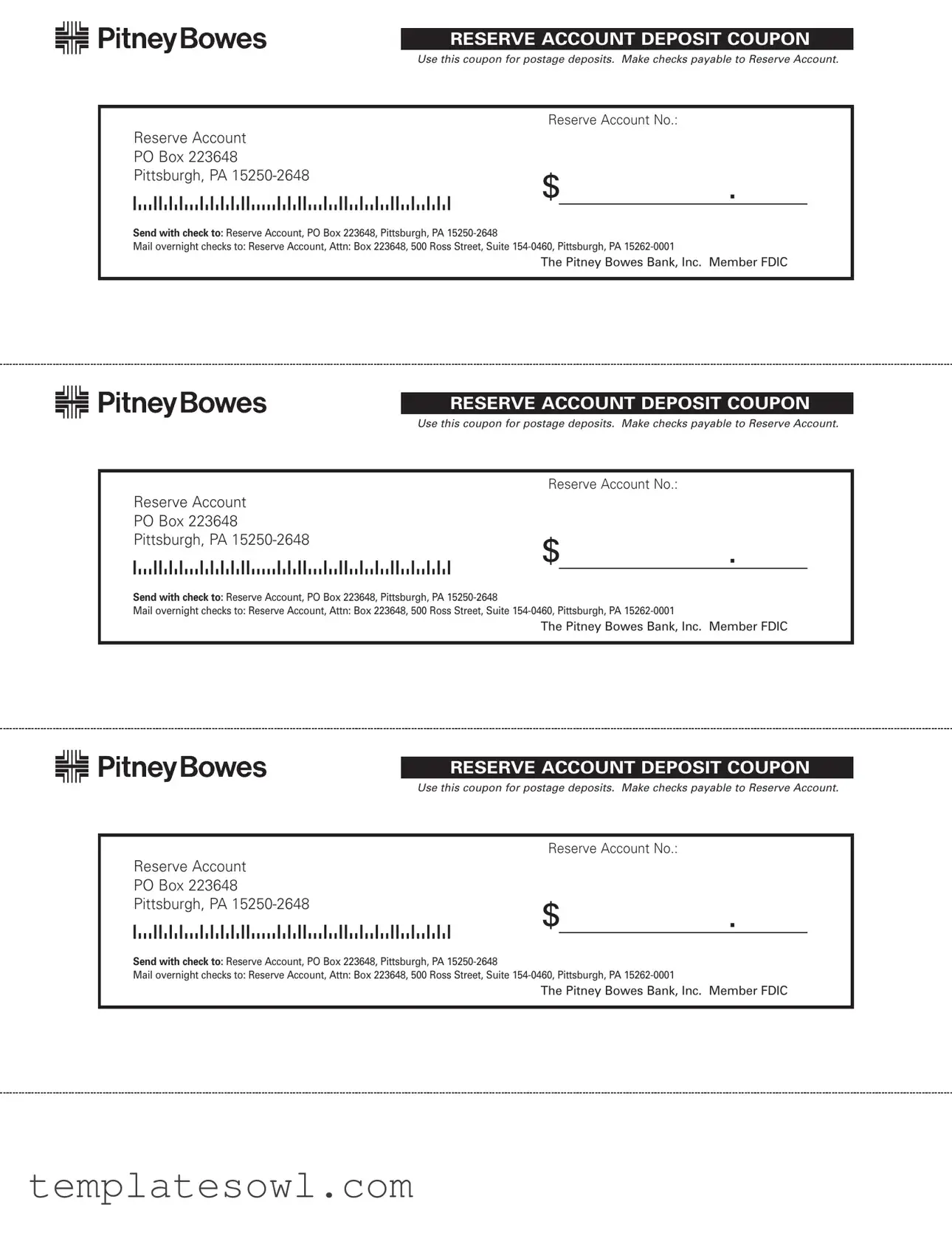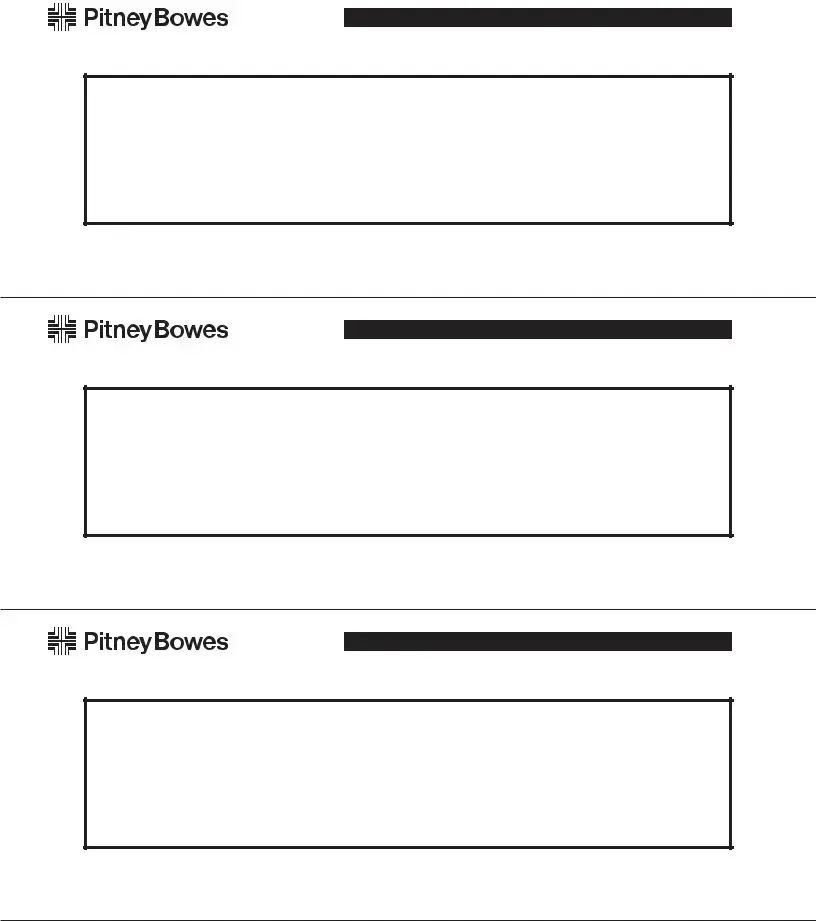RESERVE ACCOUNT DEPOSIT COUPON
Use this coupon for postage deposits. Make checks payable to Reserve Account.
|
|
Reserve Account No.: |
|
|
Reserve Account |
|
|
|
|
PO Box 223648 |
|
|
|
|
Pittsburgh, PA 15250-2648 |
$ |
. |
|
/152502648485/ |
|
|
|
|
SEND WITH CHECK TO: Reserve Account, PO Box 223648, Pittsburgh, PA 15250-2648
Mail overnight checks to: Reserve Account, Attn: Box 223648, 500 Ross Street, Suite 154-0460, Pittsburgh, PA 15262-0001
The Pitney Bowes Bank, Inc. Member FDIC
RESERVE ACCOUNT DEPOSIT COUPON
Use this coupon for postage deposits. Make checks payable to Reserve Account.
|
|
Reserve Account No.: |
|
|
Reserve Account |
|
|
|
|
PO Box 223648 |
|
|
|
|
Pittsburgh, PA 15250-2648 |
$ |
. |
|
/152502648485/ |
|
|
|
|
SEND WITH CHECK TO: Reserve Account, PO Box 223648, Pittsburgh, PA 15250-2648
Mail overnight checks to: Reserve Account, Attn: Box 223648, 500 Ross Street, Suite 154-0460, Pittsburgh, PA 15262-0001
The Pitney Bowes Bank, Inc. Member FDIC
RESERVE ACCOUNT DEPOSIT COUPON
Use this coupon for postage deposits. Make checks payable to Reserve Account.
|
|
Reserve Account No.: |
|
|
Reserve Account |
|
|
|
|
PO Box 223648 |
|
|
|
|
Pittsburgh, PA 15250-2648 |
$ |
. |
|
/152502648485/ |
|
|
|
|
SEND WITH CHECK TO: Reserve Account, PO Box 223648, Pittsburgh, PA 15250-2648
Mail overnight checks to: Reserve Account, Attn: Box 223648, 500 Ross Street, Suite 154-0460, Pittsburgh, PA 15262-0001
The Pitney Bowes Bank, Inc. Member FDIC

